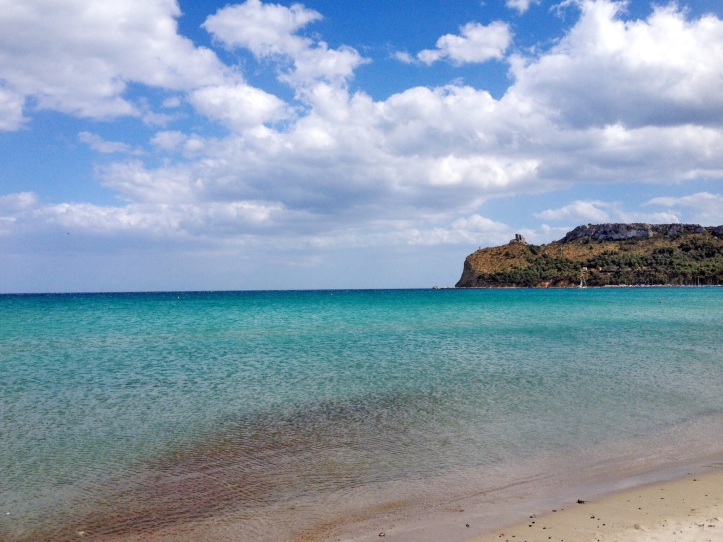[..]And suddenly there is Cagliari: a naked town rising steep, steep, golden looking, piled naked to the sky from the plain at the head of a formless hollow bay. It is strange and rather wonderful, not a bit like Italy. The city piles up lofty and almost miniature and makes me think of Jerusalem: without trees, without cover, rising rather bare and proud, remote as if back in history, like a town in a monkish, illuminated missal.
One wonders how it ever got there. And it seems like Spain or Malta: not Italy. It is a steep and lonely city, as in some old illumination. Yet withal rather jewel-like: like a sudden rose-cut amber jewel naked at the depth of the vast indenture.
D.H. Lawrence, Sea and Sardinia 1921
The capital city of Sardinia is located in the south end of the island, in the middle of the Gulf of the Angels. Like Rome, the city is spread out over seven hills (Sant’Elia, Bonaria, Monte Urpinu, Castello, Monte Claro, Tuvixeddu and San Michele).
Because of its favourable position, the area has been inhabited since ancient times. Numerous prehistoric relics has been found on the hills (especially on Monte Claro and Sant’Elia).
The modern name of the city comes from the Phoenician of Karalis around the 8/7th century BC.
The original city was located on the banks of Santa Gilla pond. Numerous relics of this epoch has been found, especially on the hill of Tuvixeddu, where is located one of the most important Phoenician necropoleis of the Mediterranean area.
When the Romans took over, Karalis became the capital of the island. Important relics of this period can still be found in the city, such has the amphitheatre, the Tigellio’s house and the Cave of the Viper.
After the fall of the Western Roman Empire, Cagliari became part of the Byzantine Empire, but because of the distance, it gradually became the capital of an independent Giudicato.
Starting from the XII century the city fell under the influence of the Pisan Republic.
Pisans reshaped the city in the way it is known now, with the four historical quarters of Castello, Marina, Stampace and Villanova. Others evidence of their influence can be found in the two Pisan towers built in the 1300’s together with the massive city walls that mark and watch over the oldest part of the town, Castello. In the Castello neighbourhood, you’ll find the Cathedral, built in the same period as the towers (in 1254).
After the conquest by the Catalan-Aragonese army, Cagliari became the capital of the newborn Kingdom of Sardinia, which lasted until the unification of Italy.
Cagliari is a city of ancient and complex traditions.
The most important festivity is The Feast of St. Ephysius (Sant’Efis), which take place every 1st May since 1656.
Another important event is the Sardinia’s day (Sa die de sa Sardigna) which recalls the population’s insurrection against the Piedmont domination the 28th April of 1794.
Poetto in the main beach of the city. It is at just a few km from the centre of the city and it spreads for over 12km.

[…] Giudicato of Cagliari (with capital in Santa Igia, nearby the modern Cagliari) […]
"Mi piace""Mi piace"